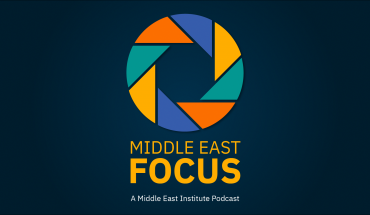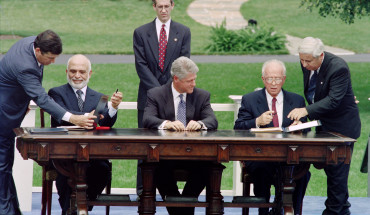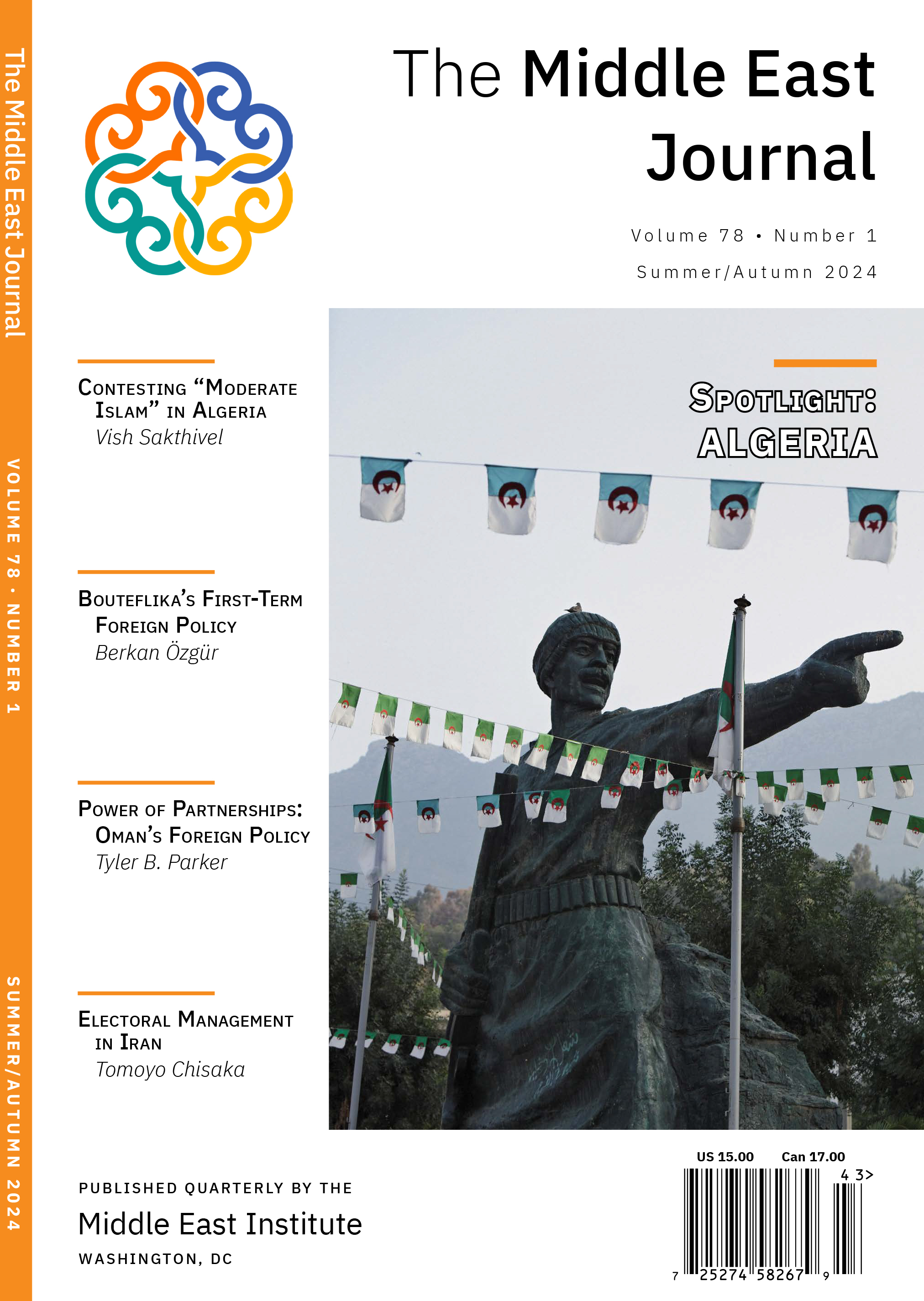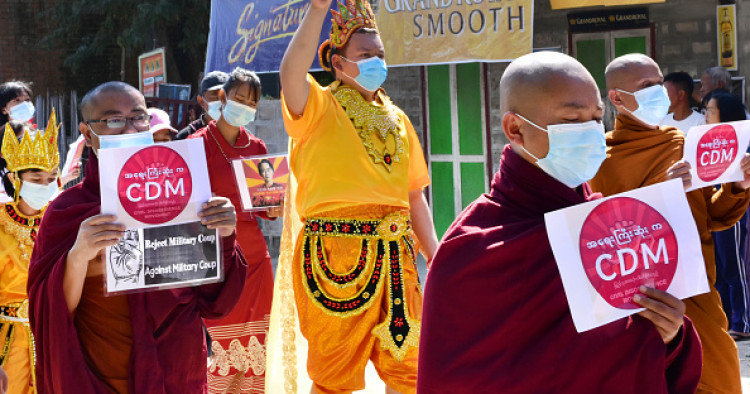This article is part of the series on “COVID-19 in the Middle East and Asia: Impacts and Responses”. Read more ...
After ten years of tacit liberalization, Myanmar is back under military rule. On February 1, 2021, the country’s military, known as the Tatmadaw, staged a coup to prevent Aung San Suu Kyi’s National League for Democracy (NLD) from assuming its second term in office. Without providing evidence, the Tatmadaw claimed that the NLD had rigged the November 2020 elections, which it had won in a landslide. One day after the coup, the military leadership invoked a state of emergency and established the State Administration Council (SAC), headed by commander-in-chief Min Aung Hlaing.[1]
The coup was followed by the emergence of a large-scale Civil Disobedience Movement (CDM) that sought to bring down the new military junta through strict non-collaboration and massive street demonstrations. The Tatmadaw responded by mounting a violent crackdown, which in turn prompted the movement’s increasing radicalization. The military coup and its economic repercussions combined with the devastation caused by the COVID-19 pandemic has led to massive human suffering.
This article examines Myanmar’s “triple crisis” and its domestic political implications. First, it sketches the outlines of the political, health, and economic crises facing the country. Next, it highlights the ways in which these crises are interrelated. Finally, it considers how Myanmar’s triple crisis might affect the country’s prospects for democracy and the development of democratic practices within its pro-democracy movement.
The Triple Crisis: Military Coup, COVID-19, and a Crippled Economy
Rather than constituting separate phenomena, Myanmar’s political, health and economic crises are inextricably interlinked. The Tatmadaw itself had initiated the limited political liberalization that occurred from 2010 to 2020/2021 and had always controlled it from behind the scenes. Nevertheless, most citizens and especially the younger generation, which grew up with significant freedom of expression and access to the world through the internet, placed high hopes in the nascent democratic system.[2] With the coup, these hopes were shattered, making many young people determined to either force the military down or die. After a short period in which protests were somewhat tolerated, the Tatmadaw began to brutally crack down on the CDM, killing more than 1,000 people and arresting another 6,000 by mid-September 2021.[3] Many young protesters were shot in the head by snipers, while the military also deliberately killed children during its raids on residential areas.[4] As a result, parts of the resistance movement have started to radicalize, raising the risk of state collapse.[5]
Doctors and health workers were among the first to initiate the CDM. After suspending their work in public hospitals, many tried to treat patients in their homes or community-based, private clinics. The military, however, has cracked down on such initiatives, arresting many doctors and nurses belonging to the CDM.[6] To go after its critics, the military junta has also weaponized COVID-19. Leading NLD politicians, including Aung San Suu Kyi and former President Win Myint, have been charged with violating COVID-19 regulations.[7] Shortly after the coup, the head of the NLD government’s vaccination program was arrested, dealing a huge blow to the roll-out of vaccines.[8] Moreover, given the widespread public distrust of the Tatmadaw, most people have refused to be vaccinated under the SAC’s vaccination program.[9] When the third wave of COVID-19 hit the country with the more infectious Delta variant in July and August 2021, the health system collapsed.[10] As of the latter half of September, Myanmar had officially reported a total of 448,158 and 17,129 deaths.[11] These figures, however, are bound to be a gross underestimation, because they only include COVID-related deaths in public clinics, while most people have died at home. Although infections are currently declining, public health care remains in shambles, owing to ongoing civil disobedience and the military’s onslaught against medical personnel.
The military coup also has had a devastating impact on Myanmar’s fledgling economy. Determined to disobey and resist the SAC at any cost, factory workers, bank employees and even significant numbers of civil servants joined the CDM, bringing economic activities in many sectors to a standstill.[12] While the United States and the European Union have enacted targeted sanctions against military-owned conglomerates, private investors have begun to shun the country due to growing political instability. In addition, business transactions have been hampered by internet shutdowns imposed by the military to stifle protests. With many banks affected by ongoing strikes, enterprises that have meanwhile reopened have lacked access to credit. Concurrently, many citizens have withdrawn their deposits, raising the risk of inflation.[13] As early as March 2021, the UN World Food Programme had warned that rising consumer prices might soon push poor families into hunger.[14] Around the same time, CDM activists already had reported that they were surviving on mutual aid and solidarity initiatives, such as soup kitchens. Nevertheless, many prioritized overthrowing the SAC over safeguarding the economy.[15]
Due to the military’s appalling brutality against unarmed protesters, defections from the security forces have been on the rise. In late August 2021, The Irrawaddy reported that around 2,000 members of the law enforcement agencies had defected, approximately one third of whom were military personnel. While most renegade soldiers seem to be from the lower echelons of the armed forces, around 100 officers from the ranks of lieutenant to major are also reported to have joined the CDM.[16] While the overall numbers are still low, the development is noteworthy given the Tatmadaw’s hierarchical structure and historically strong esprit de corps.
Democracy Movement Underground: Between Inclusion, Violence and Prospective Hierarchies
Nine months into the February 2021 coup, the military has mostly managed to suppress open demonstrations, forcing the pro-democracy movement underground. Concurrently, both the SAC and the democratic resistance have made it clear that they don’t want to dialogue with each other. While the Tatmadaw has resumed its old habit of demanding obedience and submission from the population it is meant to serve, the CDM, for understandable reasons, does not view the SAC as a legitimate dialogue partner.[17] Accordingly, another guided liberalization such as the one that occurred between 2010 and 2020 is unlikely in the near term. Similarly, chances for a negotiated settlement remain close to nil — except for the unlikely eventuality that military defections rise to such a level that the Tatmadaw splits and there emerges a reform-minded fraction of the military that is willing to enter a dialogue with the democratic resistance and the latter reciprocates.
In addition, the triple crisis of the military coup, COVID-19, and Myanmar’s economic disaster has profoundly affected the internal structure and the prevalence of democratic practices within the pro-democracy movement itself. First and foremost, the post-coup period has been marked by a massive rejuvenation of the democratic movement. Led by students and other young protesters belonging to the so-called “Generation Z”[18] (young people born after 1997),[19] the anti-military demonstrations that erupted after the coup were highly innovative and creative, with protest repertoires including street performances, the flashing of the three-finger salute (a gesture from the science fiction movie “The Hunger Games”) and imaginative blockades, such as “car mobs.”[20] Moreover, the mass demonstrations that unfolded after the coup united diverse political, ethnic and religious groups, thereby enhancing tolerance and inclusiveness within the pro-democracy movement. Specifically, members of Myanmar’s disenfranchised Muslim minority protested alongside activists belonging to the Buddhist Bamar majority. Importantly, this also included members of the persecuted ethno-linguistic minority Rohingya, who were often welcomed by Bamar protesters carrying placards inscribed with the slogan “we regret” — a reference to the military’s genocidal campaign against the Rohingya.[21] Regarding inter-ethnic and inter-religious tolerance, the military coup in this sense had a “paradoxical benefit,” as a seasoned pro-democracy activist put it.[22]
In line with its anti-military and anti-authoritarian orientation, the democratic resistance movement quickly adopted revolutionary demands aimed at pushing the military out of politics.[23] On February 5, 2021, a group of parliamentarians formed the Committee Representing Pyidaungsu Hluttaw (CRPH) as a parallel government. In March 2021, the CRPH declared the 2008 constitution, which enshrines the Tatmadaw’s veto power in politics, voided[24] and replaced it with its own Federal Democracy Charter.[25] In April, the CRPH transformed itself into the more inclusive National Unity Government (NUG) that has since reached out to many Ethnic Armed Organizations (EAO) and diverse elements of the CDM. Similarly, it has recognized the Rohingya and made their dignified return to Myanmar a key priority.[26] In this regard, the position of the NUG goes far beyond that of the displaced NLD government,[27] which not only kept silent about the military’s atrocities but refrained from using the word “Rohingya,” thereby implicitly stripping the minority of their identity and rights.[28] So far, however, the NUG mainly operates underground, from border areas controlled by friendly ethnic armies and from exile, and thus lacks territorial control inside mainland Myanmar.[29]
With the SAC being unable to tackle the health and related socio-economic crises caused by the COVID-19 pandemic, civil society organizations and engaged citizens have provided the bulk of emergency relief. For instance, volunteer associations have taken care of the cremation of corpses, while faith-based and other community-oriented initiatives have distributed oxygen free of charge. According to press reports, members of the Muslim minority have participated prominently in such relief efforts, catering to patients irrespective of ethnicity and religious belonging.[30] Just like the mass demonstrations that followed the February 2021 military coup, civil society engagement in the health sector may hence strengthen social cohesion as well as inter-religious and inter-ethnic tolerance.
Recently, however, the pro-democracy movement has also been marked by an increasing fusion of democratic practices with violence. While the CDM was strictly non-violent when it started, the military’s brutal crackdown on peaceful protests has radicalized parts of the democratic resistance movement. Similarly, it has also lead many ordinary citizens to consider violence as a legitimate means of last resort.[31] CDM activists who saw their friends or relatives shot in the streets have escaped to territories controlled by EAOs, such as the Karen National Union (KNU) and the Kachin Independence Organization (KIO), who have instructed them how to defend themselves against military onslaughts and, at times, provided them with full-fledged military training.[32] Throughout the country, so-called People’s Defense Forces (PDFs) have been formed to protect communities from military attacks. However, PDFs have also actively fought or ambushed the Tatmadaw in some cases. In the cities, urban cells consisting of radicalized fractions of the CDM have begun to conduct urban guerrilla warfare and engaged in bombings and targeted assassinations of military and government personnel. People suspected of being military stooges have also, at times, been killed by such cells.[33] While the NUG does not seem to have direct control over most of these groups, it has publicly claimed to have established the PDFs as precursors to a “federal army.”[34]
In addition, the nearly five decades of direct military rule (1962 to 2010) have shown that the more the Myanmar pro-democracy movement is driven underground, the more hierarchical it tends to get internally. The student movement that fought the previous military regime, for instance, was characterized by strong internal hierarchies and rigid structures of command and control, owing to its underground nature and the secrecy with which it had to operate.[35] To date, the CDM has largely been characterized by leaderless resistance. According to a former political prisoner, this also reflects attempts by the new generation of pro-democracy activists to avoid the pitfalls of the 1988 student movement,[36] which was partially co-opted by individual leaders. Having to operate underground, however, is bound to reinforce hierarchies within the new pro-democracy movement as well, especially if a resort of violent means of resistance further enhances structures of command and control.
Conclusion
The three interrelated crises of the February 2021 military coup, COVID-19 and a crippled national economy have pushed Myanmar into a humanitarian disaster that can only worsen as brutal military crackdowns and increasingly violent resistance to them enhance the risk of country-wide civil war and ultimately state collapse.[37] Although this triple crisis has harmed the country’s democratic forces, it has had an ambivalent and, at times, a paradoxical impact on the pro-democracy movement. Broad-based popular resistance against the military takeover and civil society-based relief efforts to alleviate the health and welfare needs inflicted by COVID-19 have interacted to unite diverse political, ethnic, and religious groups, leading to growing inclusivity and tolerance within the pro-democracy movement. Similarly, a massive rejuvenation of the democratic movement has opened new perspectives for democratic change beyond the established NLD leadership, which has lost much of its democratic integrity due to its failure to condemn the military’s ethnic cleansing of the Rohingya. However, the more drawn-out and violent the conflict between the Tatmadaw and the democratic resistance gets, the more the new pro-democracy movement is likely to be beset by internal hierarchies and structures of exclusion. Hence, Myanmar’s democratic movement will be heavily shaped by the political context of repression in which it operates, and the country’s new generation of pro-democracy activists will have to struggle hard to avoid history repeating itself.
[1] “Who are the SAC - State Administration Council Myanmar,” Myanmar Speaks, April 25, 2021, https://www.myanmarspeaks.com/posts/who-are-the-sac-state-administration-council-myanmar.
[2] Background conversation, international development worker, October 2020.
[3] “Hundreds Dead in Myanmar's Violent Crackdown,” Graphics Reuters, https://graphics.reuters.com/MYANMAR-POLITICS/zjpqkkoaqpx/, accessed September 21, 2021.
[4] “Myanmar military junta warns protesters risk being shot in the head or back,” ABC.Net.AU, March 27, 2021, https://www.abc.net.au/news/2021-03-27/myanmar-junta-warns-protesters-risk-being-shot-in-the-head/100032998; and “Myanmar coup: More than 40 children killed by military, rights group says,” BBC Asia, July 1, 2021, https://www.bbc.com/news/world-asia-56600292.
[5] Help Contain the Damage of Myanmar’s Military Coup. Commentary Asia, International Crisis Group (ICG), May 26, 2021, https://www.crisisgroup.org/asia/south-east-asia/myanmar/help-contain-damage-myanmars-military-coup.
[6] “Myanmar Junta Charges and Arrests Striking Doctors and Senior Medical Staff,” The Irrawaddy, April 14, 2021, https://www.irrawaddy.com/news/burma/myanmar-junta-charges-arrests-striking-doctors-senior-medical-staff.html.
[7] “Rising Myanmar Covid caseload hits Suu Kyi trial,” France24, June 12, 2021, https://www.france24.com/en/live-news/20210712-rising-myanmar-covid-caseload-hits-suu-kyi-trial.
[8] “Myanmar reports highest Covid numbers since coup as concerns over health system grow,” The Guardian, June 21, 2021, https://www.theguardian.com/world/2021/jun/21/myanmar-reports-highest-covid-numbers-since-coup-as-concerns-over-health-system-grow.
[9] Verena Hölzl, “Myanmar: Das Virus und der Widerstand,” Zeit Online, July 4, 2021, https://www.zeit.de/zustimmung?url=https%3A%2F%2Fwww.zeit.de%2Fpolitik%2Fausland%2F2021-07%2Fmyanmar-coronavirus-militaerjunta-widerstand-militaerputsch-pandemie.
[10] Grace Tsoi and Moe Myint, Moe, “Covid and a coup: The double crisis pushing Myanmar to the brink,” BBC News Asia, July 30, 2021, https://www.bbc.com/news/world-asia-57993930.
[11] COVID-19 Tracker: Myanmar, Reuters, https://graphics.reuters.com/world-coronavirus-tracker-and-maps/countries-and-territories/myanmar/, accessed September 21, 2021.
[12] John Reed, Patricia Nilsson, and Katrina Manson, “Protesters playing ‘dangerous game’ with Myanmar’s economy, warn businesses,” Financial Times, March 17, 2021, https://www.ft.com/content/ba39960d-e267-40e8-8907-ff921506e285.
[13] Thein Htew, “How the coup is destroying Myanmar’s economy,” East Asia Forum, June 23, 2021, https://www.eastasiaforum.org/2021/06/23/how-the-coup-is-destroying-myanmars-economy/.
[14] Reed, Nilsson, and Manson, “Protesters playing `’dangerous game.’”
[15] Online roundtable, March 2021.
[16] “Atrocious Myanmar Military at Risk of Splitting: Army Defectors,” The Irrawaddy, August 28, 2021, https://www.irrawaddy.com/news/burma/atrocious-myanmar-military-at-risk-of-splitting-army-defectors.html.
[17] “# What’s Happening in Myanmar?” Hold Your Fire. Podcast Asia, ICG, July 15, 2021, https://www.crisisgroup.org/asia/south-east-asia/myanmar/whatshappeninginmyanmar; Morten Pedersen, “Morten Pedersen’s Political Update” [podcast], Burma/Myanmar Update 2021, Canberra: Australian National University (ANU), https://myanmarmusings.com/morten-pedersens-political-update, accessed August 28, 2021.
[18] Hsu Lei Watti, “Gen Z and the Battle for Democracy in Myanmar,” The Progressive Magazine, April 20, 2021, https://progressive.org/latest/gen-z-and-democracy-myanmar-watti-210420/.
[19] Michael Dimock, “Defining generations: Where Millennials end and Generation Z begins,” Pew Research Center, January 19, 2019, https://www.pewresearch.org/fact-tank/2019/01/17/where-millennials-end-and-generation-z-begins/.
[20] See for example: Thin Lei Win, “Young, creative and angry: Myanmar’s youth pushes back,” Nikkei Asia, January 19, 2021, https://asia.nikkei.com/Life-Arts/Young-creative-and-angry-Myanmar-s-youth-pushes-back.
[21] Online roundtable, March 2021.
[22] Ibid.
[23] Ingrid Jordt, Tharaphi Than, and Sue Ye Lin, “How Generation Z Galvanized a Revolutionary Movement Against Myanmar’s 2021 Military Coup,” Trends in Southeast Asia, Issue 7, ISEAS Yusof Ishak Institute, https://www.iseas.edu.sg/wp-content/uploads/2021/04/TRS7_21.pdf.
[24] Ibid.
[25] Federal Democracy Charter – Part I, https://crphmyanmar.org/wp-content/uploads/2021/04/Federal-Democracy-Charter-English.pdf, accessed October 6, 2021.
[26] Confidential exchange, May 2021.
[27] Confidential conversations, August 2021.
[28] See for example: NLD government must restore the human rights for Rohingya population, Burman Human Rights Network (2016), June 27, 2016, https://bhrn.org.uk/en/press-release/1-nld-government-must-restore-the-human-rights-for-rohingya-population.html; Marlise Simons and Hannah Beech, “Aung San Suu Kyi Defends Myanmar against Rohingya Genocide Accusations,” New York Times, May 24, 2020 (updated from December 11, 2019), https://www.nytimes.com/2019/12/11/world/asia/aung-san-suu-kyi-rohingya-myanmar-genocide-hague.html.
[29] Confidential exchange, May 2021.
[30] “COVID-19: Public health services are collapsing in post-coup Myanmar,” DW News, August 12, 2021, https://www.youtube.com/watch?v=KGm5F94xOIk. See also South China Morning Post (2021), “Myanmar’s volunteers help during Covid-19 surge as country grapples with post-coup fallout,” Youtube, July 19, 2021, https://www.youtube.com/watch?v=-fnkmuPtS8I.
[31] Confidential conversations, August 2021.
[32] Confidential online roundtable, April 2021; and Kocha Orlan and Paula Hancocks, “At military camps in the Myanmar jungle, doctors and students learn how to fire guns,” CNN, May 5, 2021, https://edition.cnn.com/2021/05/04/asia/myanmar-rebels-training-hnk-dst-intl/index.html.
[33] “# What’s Happening in Myanmar?” Hold Your Fire. Podcast Asia, ICG, July 15, 2021, https://www.crisisgroup.org/asia/south-east-asia/myanmar/whatshappeninginmyanmar; “Taking Aim at the Tatmadaw: The New Armed Resistance to Myanmar’s Coup,” ICG Asia Briefing 168, https://www.crisisgroup.org/asia/south-east-asia/myanmar/b168-taking-aim-tatmadaw-new-armed-resistance-myanmars-coup.
[34] Confidential exchange, May 2021; and Sebastian Strangio, “Can Myanmar’s New ‘People’s Defense Force’ Succeed?” The Diplomat, May 6, 2021, https://thediplomat.com/2021/05/can-myanmars-new-peoples-defense-force-succeed/.
[35] Jasmin Lorch, “Varieties and Dilemmas of Activism in Informal Spaces of Resistance: The Case of Burma under Military Rule,” Middle East Institute (MEI), September 6, 2016, https://www.mei.edu/publications/varieties-and-dilemmas-activism-informal-spaces-resistance-case-burma-under-military.
[36] The 1988 student movement protested to bring down Myanmar’s first military regime that ruled the country from 1962 onwards. The military brutally cracked down on the demonstrations, killing between 3,000 and 10,000 people, most of them students and children.
[37] See for example: ICG, Taking Aim at the Tatmadaw.
The Middle East Institute (MEI) is an independent, non-partisan, non-for-profit, educational organization. It does not engage in advocacy and its scholars’ opinions are their own. MEI welcomes financial donations, but retains sole editorial control over its work and its publications reflect only the authors’ views. For a listing of MEI donors, please click here.












